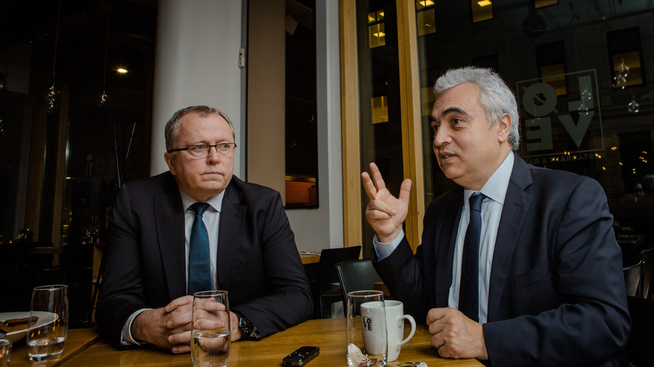Oljekartellet Opecs produksjonskuttavtale was at the weekend followed up with a kuttavtale with producers outside the cartel, the first agreement of its kind since 2001.
After that, in the years after the oljepriskollapsen in 2014 apparently set far into to come to a consensus thus has two appointments to guage oljeoverfloden been entered the last time.
Promises even bigger cuts
From the dominant Opec member Saudi Arabia will now in addition, signals of even greater produksjonsreduksjon, according to Bloomberg,
While Opec agreement entered into in 30. november outlined a decline in lendets production to 10,06 million barrels a day, from almost 10.7 million barrels per day in July, the laws of Saudi Arabia’s oil minister Khalid al-Falih even more after the agreement with the countries outside the cartel is in the box, according to Bloomberg.
– I can say with absolute certainty that with effect from 1. January, we’re going to cut significantly below the level we committed to 30. november, ” says Falih after Saturday’s meeting.

IEA-the boss on the visit then to norway: The world needs Norwegian oil
Where committed countries outside of OPEC to a reduction in the daily production of around 600,000 barrels.
– It shows the obligation to Riyadh to rebalance the market and should put a stop to the worries that the OPEC fail to deliver on the agreement, says oljeanalytiker Amrita Sen in consultancy Energy Aspects to Bloomberg.
the Agreement with countries in and outside OPEC now includes 60 per cent of the world’s oil production.
While Russian laws produksjonskutt on 300.000 per day from next year, the highest production level in 30 years are also several smaller manufacturers.
It comes at the top of the Opec countries ‘ representations, where these six member states devote most of their own production.
Oljerally on kuttplaner
Oljelandenes kuttiver have set the momentum in the price of oil.
Since oljeavtalen in the end of november has / been sent up almost 15 per cent to 54,3 per barrel.
It is still around half of what the oil price was at before the collapse in 2014.
Years of high oil prices laid the foundation for a tremendous growth in the production of shale oil in the united STATES.

Opecs oljefest continues: Statoil worth 40 billion more
When oil prices started to fall in 2014 selected OPEC with Saudi Arabia in the lead, rather to open oljekranene than to cut in order to control the price of oil up again. So they would squeeze out høykostprodusentene and hijack your market share.
With increased production from OPEC has the market virtually swimming in oil, which sent prices down to below 30 dollars a barrel at the lowest.
But the low prices have long pained for the Opec countries, which is now trying to raise the prices again.
the Attempts to limit the supply side to be done is not without risk that production again increases, should the prices get high up. From analytikerhold it has been pointed out that the flexible u.s. production can put a lid on how high prices can rise.
No comments:
Post a Comment